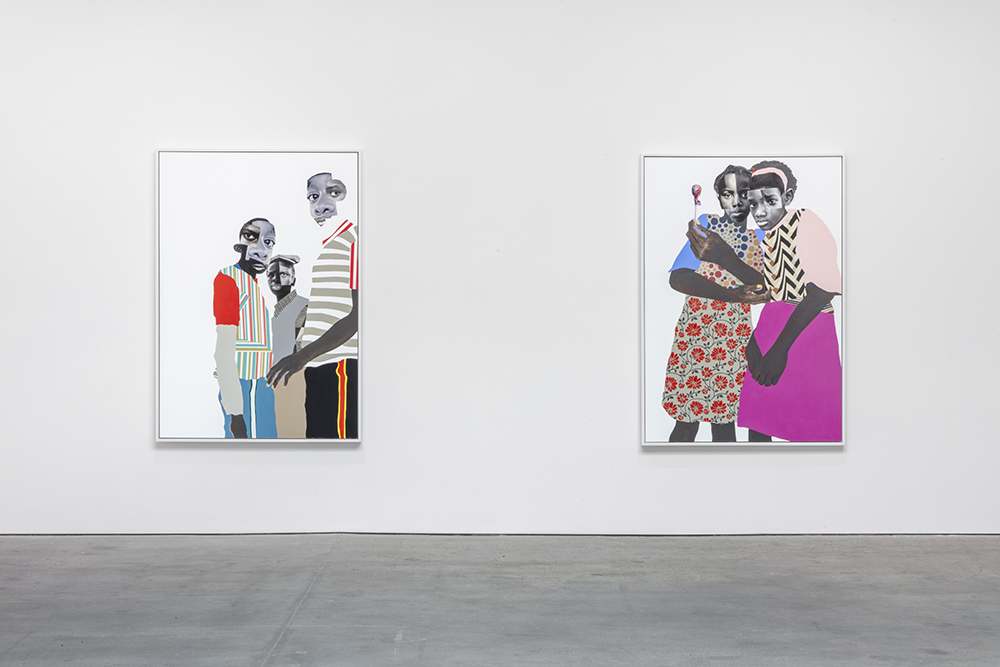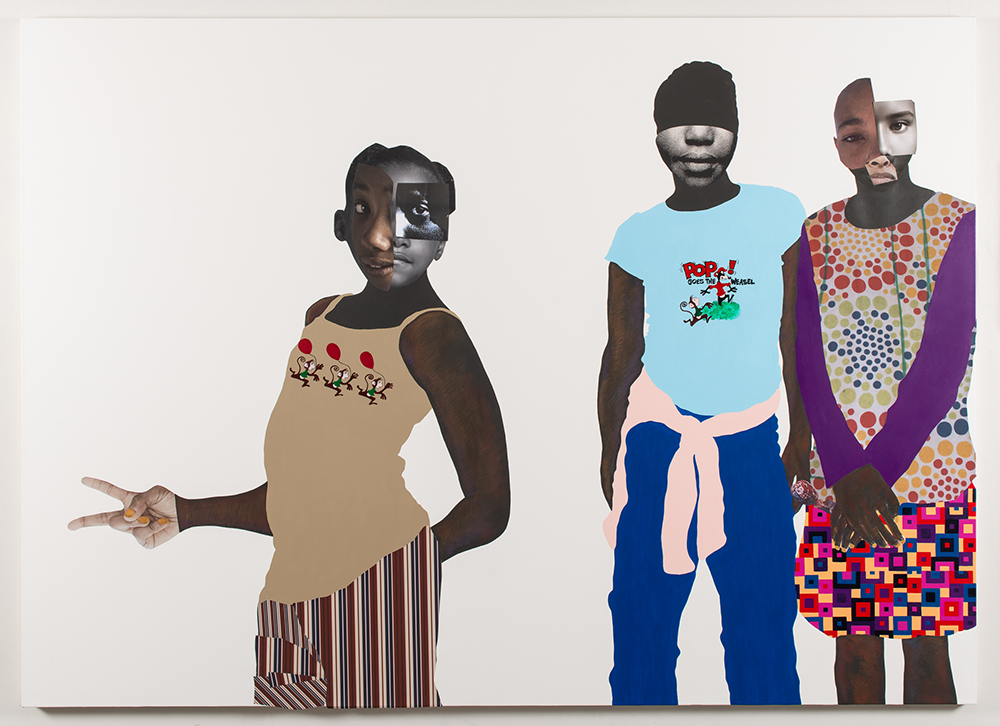Deborah Roberts’ mixed-media works propose new ways to depict Black children. Her figures dominate an otherwise blank canvas (sometimes white, sometimes black) either filling most of the frame or resonating against the negative space. Rather than contextualize them in a recognizable setting, she alludes to their history through collage. Each figure’s face is composed from several different photographs, cut apart and recombined, juxtaposed with painted, as well as collaged fabrics with clashing colorful patterns. While the works have a Cubist aura, they also pay homage to Romare Bearden who explored the fracturing of spaces and faces in his collages from the 1960s. Roberts’ figures display both a childlike innocence and an awareness of the world beyond their years.
In The duty of disobedience (2020), Roberts presents three girls with collaged faces, patterned clothing and flatly painted skin augmented with pastel. One girl wears a tan tank top with three identical cartoony monkeys holding red balloons. She looks out at the viewer, as well as across the canvas. Her right hand flashes a horizontal peace sign. The T-shirt of another girl has a monkey and a weasel on it with the slogan “pop! goes the weasel.” The third girl is dressed in colorful geometric patterns—circles on her top and concentric squares on her skirt. The thin young boy in Cock-a-doodle-do (2019) flexes his muscles and stares hard at the viewer. He wears striped shorts and a sleeveless gray shirt with a large decal of a red rooster in its center. The drawn and painted arms, socks and shoes contrast with the photographic face that is a composite of an unidentified boy and the actor Sidney Poitier. The Unseen (2020) depicts two girls with bright patterned jumpers and misaligned collaged faces. Looking out at the viewer from eyes culled from multiple sources, Roberts has once again constructed an image of innocence and knowing. That one of the girls holds a red Tootsie Pop in an oversized hand can be seen as an art historical reference to Pop Art and pop culture, as well as a nod to the sound made by a gun.

Deborah Roberts, Installation view at Vielmetter Los Angeles. Photo by Paul Bardagjy.
While Roberts’ quintessential mixed-media works against white backgrounds are situated in the front gallery, the back space offers works on paper, a video and sound installation, as well as images from Portraits: When they look back (2020), Roberts’ first series, where the figures are surrounded by black rather than a white background. This alludes, as Roberts’ states, to how “Black girls disappear into the background of life.” In What if? (2021), a mixed-media installation based on the two rooms of a Catholic confessional, Roberts memorializes the names of 400 Black women who have gone missing. Here she creates a haunting video and sound-work that poses the question, “What if she was not Black?”
As an installation, I’m is about empowerment. The works cry out: Look at me. I’m a person. I’m here. I’m important. In this exhibition, Roberts blends faces of children and grownups to suggest the trajectory toward adulthood and the fact that in today’s violent and racist world, they grow up too fast, if they get to grow up at all.


